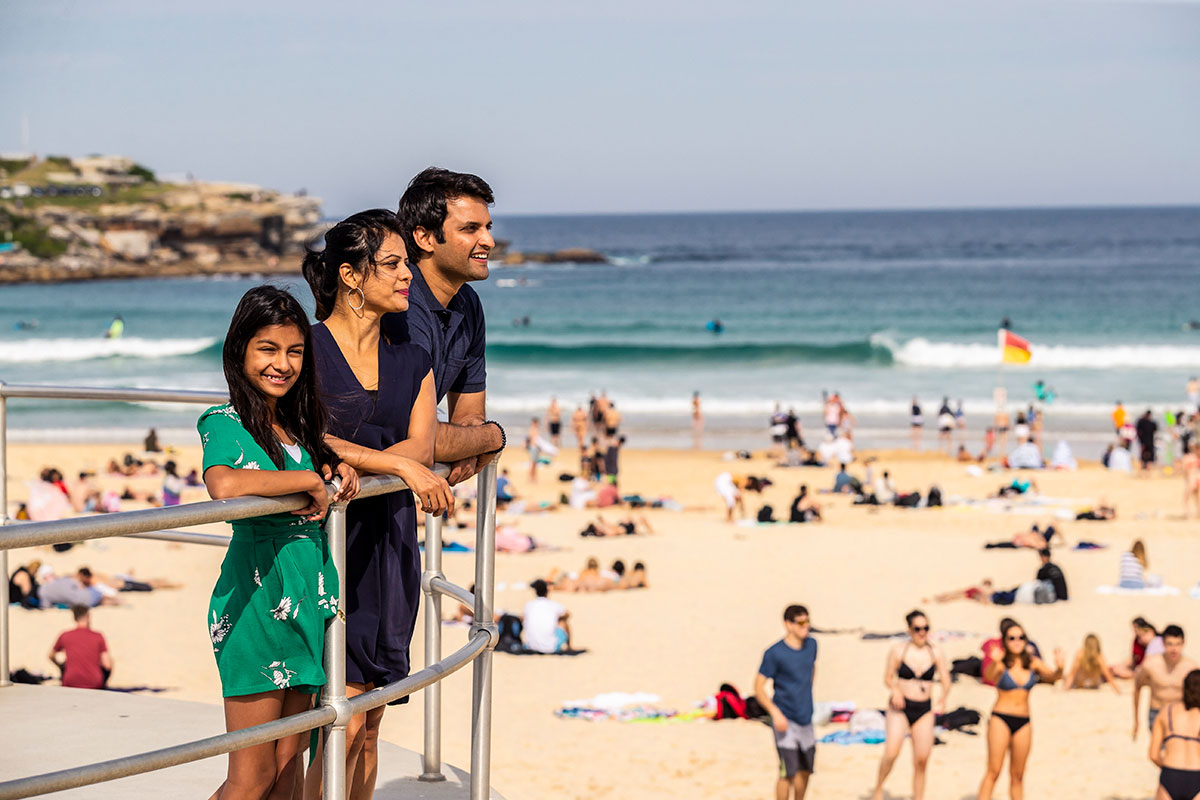Highlights of the 2024 projections
- NSW's population is projected to reach 10.07 million people by 2041.
- The average annual population growth rate is 1.1% per year.
- Net migration is the main driver of population change over the 20-year period. The Commonwealth Department of Home Affairs is responsible for setting NSW’s migration program.
- Overseas migration will play a pivotal role in our growth as international students and temporary migrants continue to return after the COVID-19 pandemic.
- A net gain of 1.7 million people from overseas will outweigh a net loss of 400,000 people moving interstate.
- The NSW population will also grow because of natural increase. There will be about 700,000 more births than deaths.
- Greater Sydney’s population is projected to increase by 1.4 million people, reaching 6.3 million in 2041.
- In the metropolitan cities of the Central Coast, Illawarra–Shoalhaven and Greater Newcastle, the population is expected to grow by 400,000 people. It will reach 1.8 million in 2041.
- Regional NSW will grow by 600,000 people to reach 3.8 million in 2041. Most of this growth will be in regional centres that are drawing people from surrounding areas and young families and retirees from Greater Sydney.
- We have an ageing population. The proportion of people aged 65 years or older will increase from 17% to 21% in 2041.
- The median age is projected to increase from 39 to 41 years in 2041. By 2041, our youngest population will be in Strathfield and our oldest will be in Tenterfield.
NSW population growth
The NSW population is projected to experience continued, yet sustainable growth. It will increase from 8.1 million in 2021 to 10.07 million in 2041. That's 2 million more people, or an average annual growth rate of 1.1% over the next 2 decades.
NSW historic and projected population 2001–2041
Drivers of population change
Migration and the balance between births and deaths (natural change) will drive this population increase.
Up to 2041, we're projecting that in NSW:
- more than 2 million children are likely to be born
- 1.2 million people are likely to die
- there will be a net gain of 1.7 million people from overseas
- there will be a net loss of 400,000 people moving interstate.
2021 population
8,097,100
Population change over 20 years
Natural change
733,200
Net migration
1,240,200
2041 population
10,070,500
Changes in the population’s age profile
Until 2041, the population of all age groups will increase, but some more so than others. There will be:
- 11% more children under 15
- 21% more people of working age
- 52% more people aged 65 or older.
Population age profile for 2021 and 2041
This means that our population will have a different age structure.
- Children will make up 16.5% of the NSW population, compared to 18.4% in 2021.
- Retirees are projected to make up 21% of the NSW population by 2041, compared to 17.2% in 2021.
Share of age groups in NSW
Metropolitan trends
Greater Sydney's population will grow from 4.9 million in 2021 to 6.3 million people by 2041. That's 1.4 million more people, up 28% over 20 years. By 2041, Greater Sydney will be home to 63% of all people living in NSW.
Central and western Sydney are the fastest growing areas of NSW. This is driven by the arrival of young couples and families, and growing housing supply. Some of the highest annual growth rates over the next 20 years will be in:
- Camden (3.5%)
- Wollondilly (3.3%)
- The Hills (2.7%).
The metropolitan cities of Greater Newcastle, the Central Coast and Illawarra–Shoalhaven will grow by 27%, from 1.4 million people in 2021 to 1.8 million in 2041.
The average age in these populations will be younger than in regional areas. Young adults and young families will take up education, employment and more affordable housing opportunities in these areas.
Population growth will be highest in Illawarra–Shoalhaven (up 36%), followed by the Lower Hunter and Greater Newcastle (27%) and Central Coast (17%).
Some local areas on the fringe of these metropolitan cities are expected to have faster population growth, driven by new housing development. In the Hunter region, Maitland (up 49%) and Cessnock (up 40%) will grow substantially over the next 20 years. In the Illawarra–Shoalhaven, Shellharbour is expected to grow by 43% and Shoalhaven by 40%.
Regional trends
Regional NSW will also continue to grow, reaching 2 million people by 2024, although local growth rates will vary.
Inland regional cities such as Albury, Bathurst, Dubbo, Tamworth and Wagga Wagga are projected to draw more people from neighbouring areas. People move to these cities, and stay there, because of a range of social and economic factors such as employment, housing, their stage of life (either with small children or at retirement) and cultural considerations.
Many regional towns and cities will grow much faster than their rural hinterland. For example, Dubbo City's growth will average 1% per year, while growth in the surrounding area will be 0.3%.
Growth will continue in coastal and inland regional centres that attract young families and retirees from Greater Sydney seeking a sea change or tree change. Examples include Ballina, Coffs Harbour, Eurobodalla, Orange, Port Macquarie and Tweed.
Some regional areas will host many older Australians as existing retirees age in place and new retirees move in. Our oldest populations are in:
- Bega Valley
- Eurobodalla
- Mid-Coast
- Nambucca Valley
- Tenterfield.
By 2041, at least 30% of residents will be aged 65 or older in 20 regional local government areas, compared with just 4 local government areas in 2021.
